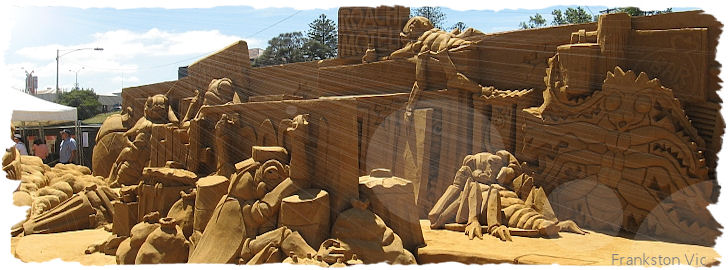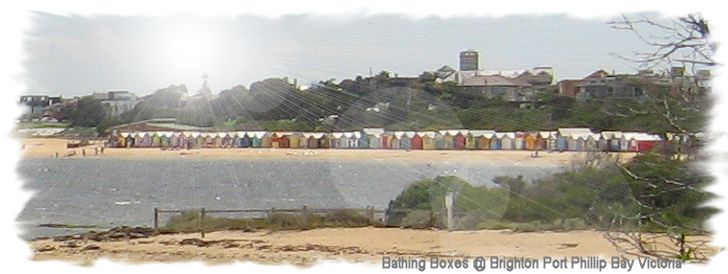Victoria is the second smallest state however it has a remarkably diverse landscape, industry, culture and population. It makes up just 3% of the continent from the ski fields of the Snowy Mountains in the east across the river systems to the semi arid plains of the Mallee in the North West.
Victoria became a colony in 1851 but after World War 2, the anglo-celtic population changed dramatically as thousands of Greeks and Italians took advantage of Australia’s Immigration Programme. Today it’s home to 100 different cultures.
Melbourne was founded in 1835 when John Batman and John Pascoe Faulkner sailed from Tasmania and “bought” 243,000 hectares from the locals – Bunurong and Woiowurrung people.
Melbourne stages the biggest writers festival, one of the world’s top comedy festivals and the Australian Tennis Open. The State has 332 museums and galleries. Victorians are also crazy about their sport and in winter Aussie Rules Football reigns.
The world’s most liveable city, Melbourne is vibrant and multicultural offering great restaurants, excellent shopping and wordl class sporting venues, tree lines boulevards & magnificent public gardens (attracting over 40% of its population).
DON’T MISS
The Aquarium, Museum, Zoo, Queen Victoria Market, Rialto Towers, Botanic Garden, Scienceworks, Southgate and the Crown Casino

In December, sculptors from Russia, the Netherlands, Belgium, Singapore, Ireland, the UK, Canada and the USA join with their Aussie workmates to form a team of 20 artists that will carve 3,500 tonnes of sand to ‘life’ as Sand Sculpting Australia – Frankston Waterfront.
From December 26 to April 25, the Frankston Waterfront is transformed as teams of talented sand sculptors create.
TOP EVENTS
Australian Open (Jan)
Formula One Grand Prix (March)
Moomba (March)
Food and Wine Festival (March)
Comedy Festival (April)
AFL Grand Final (Sept)
Royal Melbourne Show (Sept)
Festival (Oct)
Spring Racing Carnival (Nov)
Wildlife Watching
Melbourne: Thanks to the city’s wonderful gardens and parklands wildlife abounds.Black swans, Cormorants, Ducks, Moorhens, Coots and Flying Foxes live in the Botanic Gardens.
The Ringtail, White tipped Tail and Brushtail Possums rummage after dark in the Fitzroy and Alexandra Gardens. Bottlenose dolphins and seals frolic off Sorrento and Queenscliff.
Phillip Island is home to fairy penguins and koalas.
Muttonbirds nest near Port Campbell between September and April. Southern Right Whales breed from June to September at Logans Beach east of Warrnambool.
At Halls Gap in the Grampians there are koalas, eastern grey kangaroos, wallabies, sugar gliders, possums owls and long billed corellas.
Wyperfeld National Park is home to emus, kangaroos, wedge-tailed eagles, regent parrot and mallee fowl.
Little Desert National Park also has mallee fowl along with insectivorous bats and short beaked Echidnas.
At dusk in the Mount Buffalo National Park you will see the Common Wombat. The Park also houses Crimson Rosellas and the Flame Robin.
Over on the east coast you may spot a dingo but you will more likely see glossy Black Cockatoos, King Parrots and Lyrebirds.
Wilsons Promontory National Park has Eastern Grey Kangaroos, Emus, Wombats, Muttonbirds, Kookaburras, Flame Robins and at Easter, flocks of Rainbow Lorikeets.
A Tour to Remember:
Great Ocean Road: Geelong to Port Fairy (345km) 2-3 days will allow enough time to view the unexpected…. . that something special that makes your trip unique.
Begin in Geelong, the busy port city lies 72 kilometres from Melbourne and has lots of historic bluestone warehouses along the waterfront, an ideal stopping place for its cafes, restaurants and picnic spots overlooking the Bay.
Torquay – home to Surfworld Surfing Museum
Bells Beach – world famous surf beach, the setting each Easter for one of the coveted international titles.
Anglesea – there’s a great walk from the Purnell St Car Park along the cliff top and back through heathland alongside the Recreation Reserve. Don’t miss kangaroos grazing on the golf course!
Memorial Arch – dedicated to those who died in WW1. The Great Ocean Road was built by returned soldiers and later they were joined by the unemployed during the Great Depression of the 1930s.
Erskine Falls – 8 kilometres from Lorne you can view them from above and underneath.
Maits Rest – 17 kilometres from Apollo Bay enjoy an easy 40 minute walk through rainforest.
Cape Otway Lighthouse – built by convicts in 1848 you can even book a room here if you fancy staying the night.
The Twelve Apostles – these famous rock formations are one of the great highlights for this trip…only seven remain, one collapsed recently.
Loch Ard Gorge – named after the ill-fated clipper which was dashed against the rocks in 1878, only 2 of the 54 survived.
London Bridge – was until 1990, a bridge with two spans along which visitors could walk .
Warrnambool – If you’re touring between June and September then turn off to Logans Beach to see Southern Right Whales feeding and breeding. Otherwise continue on to Flagstaff Hill Maritime Museum which is a re-creation of a 19th Century Port.
Tower Hill State Game Reserve, 12 kilometres from Warrnambool, an extinct volcano with a lake in its crater can circled by road.
Port Fairy – One of Victoria’s earliest ports, this is a mixture of historic whitewashed houses and a busy waterfront.. Between September and April up to 15,000 birds fly in to roost each evening.
